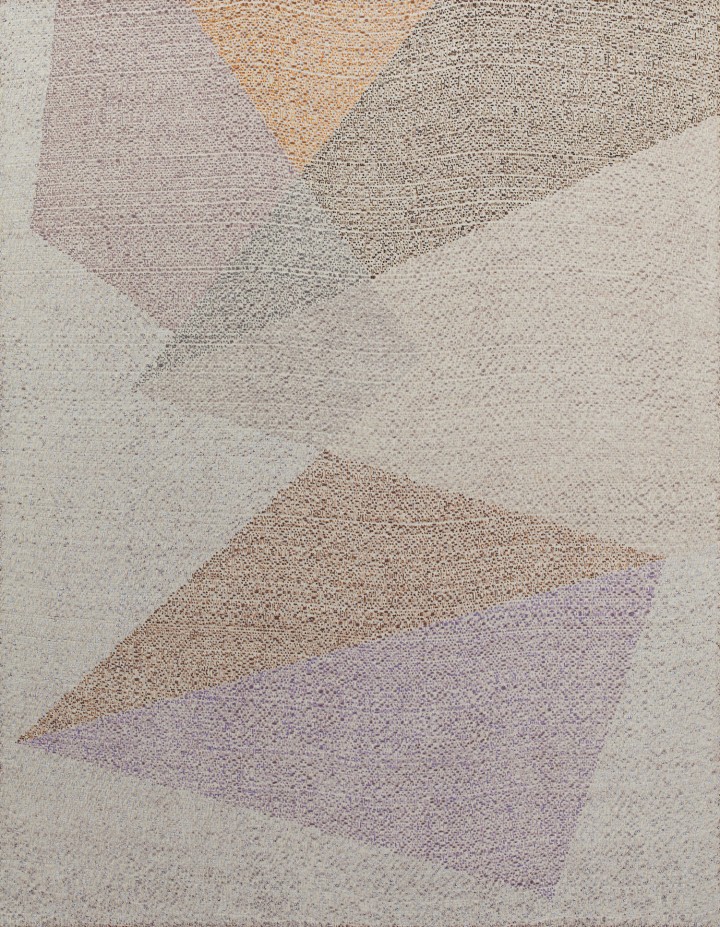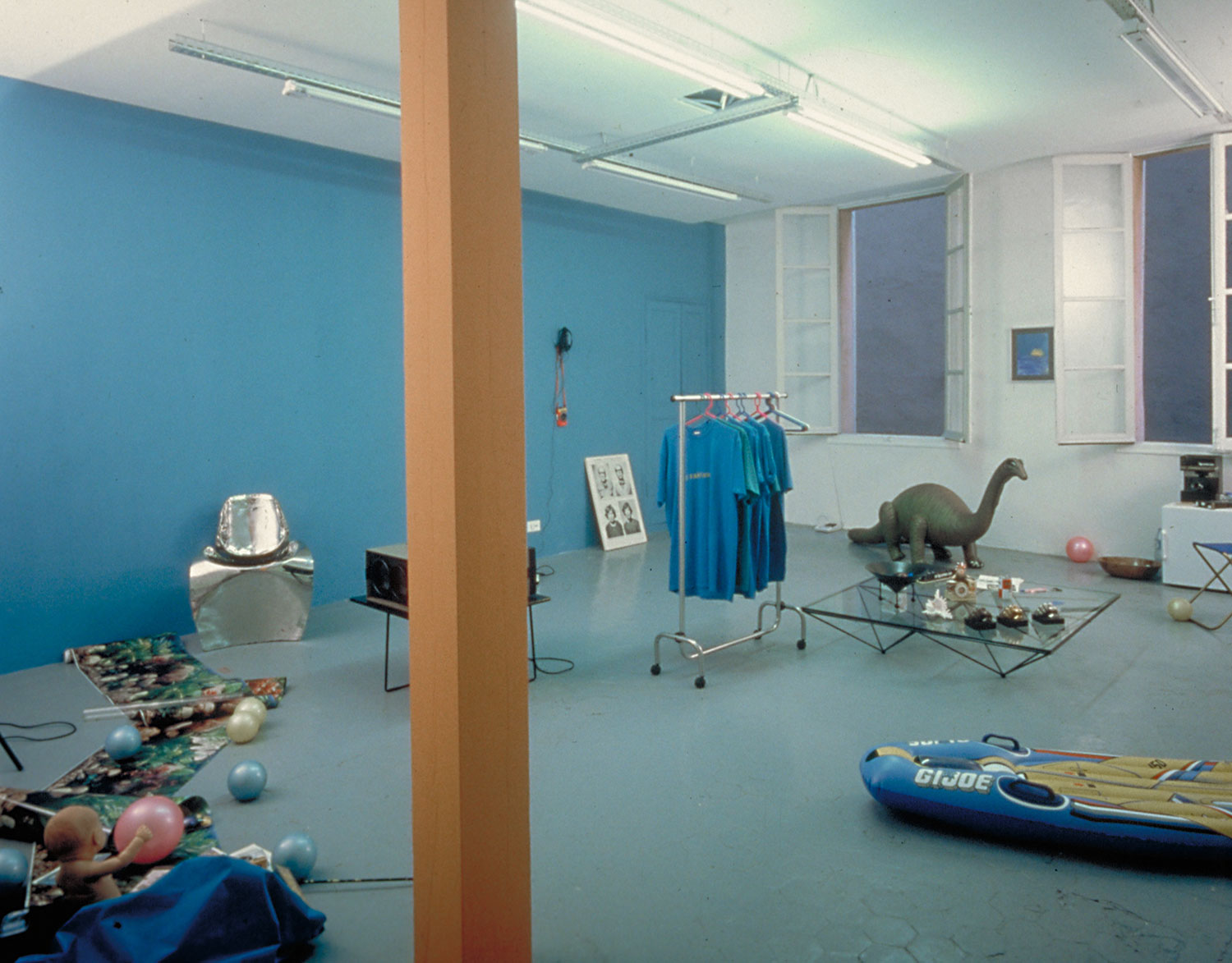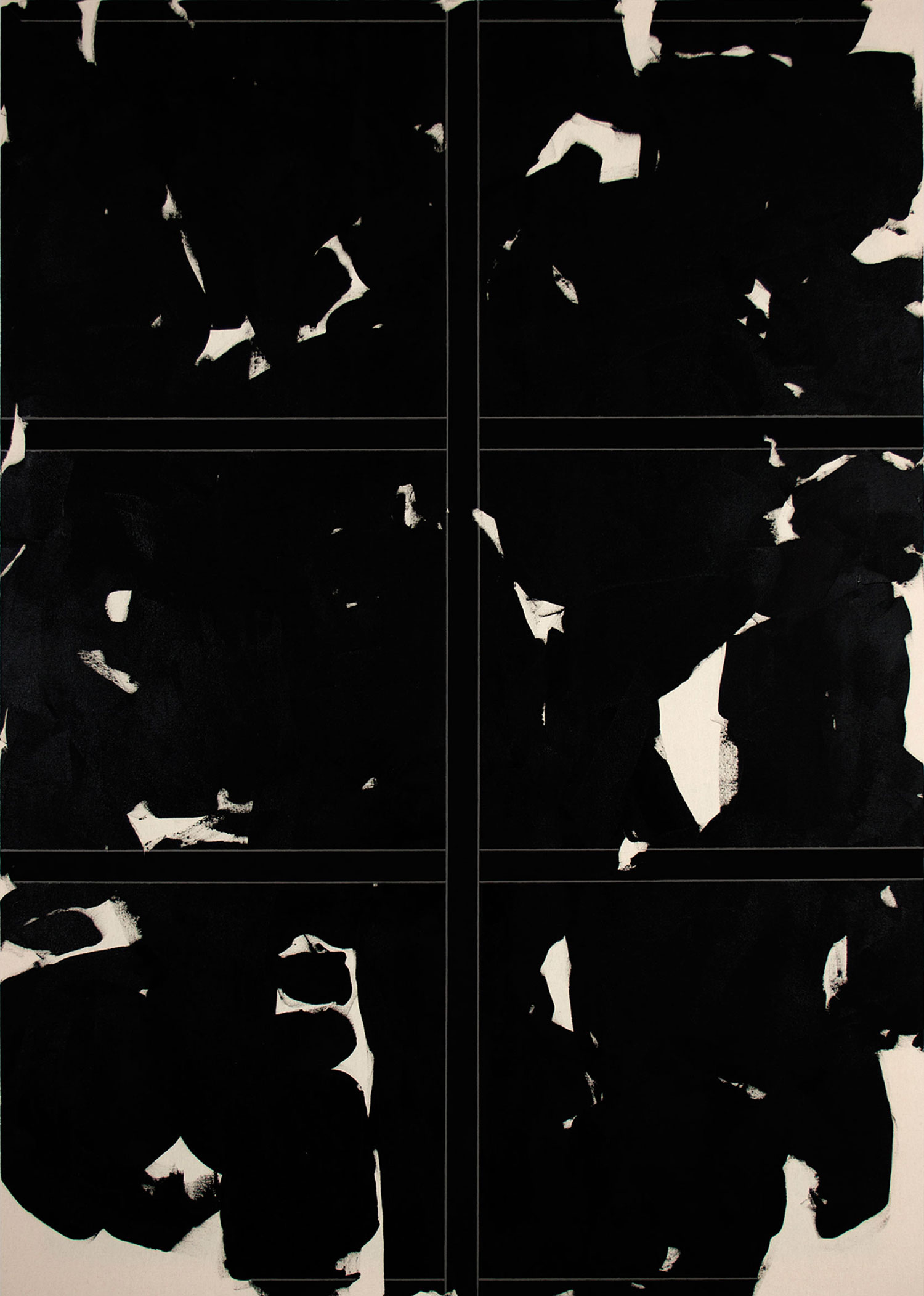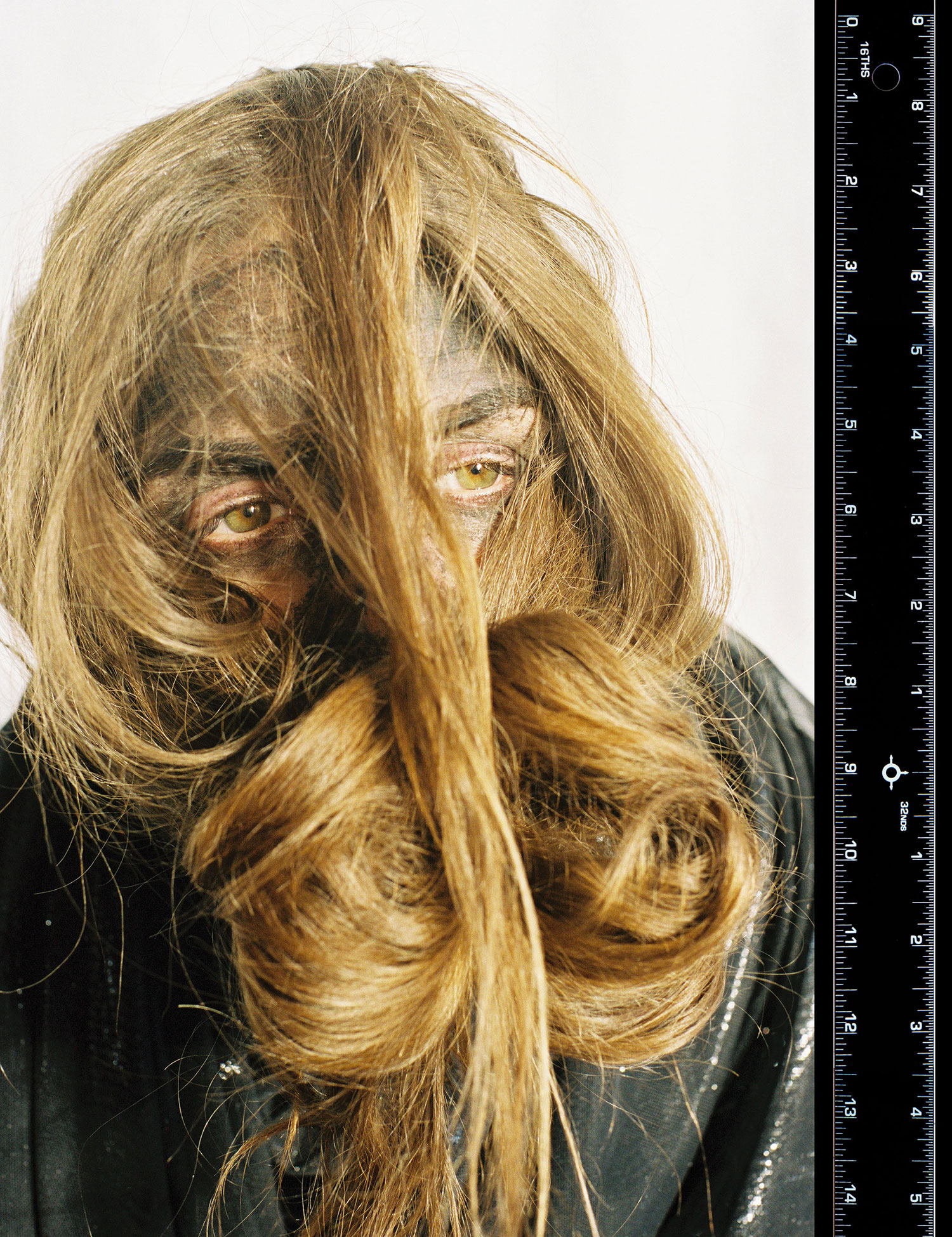
Nicola Trezzi: How important is the process in your work?
Mark Barrow: The process is as important as any other aspect. How the work is made is often emphasized because it is so unique and labor intensive. But the ideas generated from the work are just as important and equally part of the process.
NT: Sarah Parke is always co-author. What is Sarah’s role?
Sarah Parke: The process starts with the fabric. Mark and I talk about the fabrics beforehand and how it will work with the painting. Then I design the textile on paper, sometimes basing it on a traditional pattern, sometimes creating my own. Recently I have been making random, non-repeating textiles based on number permutations a computer program generates. Finally, I weave the fabric on a floor loom in our studio.
MB: I then stretch the fabric and use it as a “map” for applying the paint as I create a new composition. I consider what we do a collaboration. I am the author of the work, but Sarah has a large creative part with the fabric. She is vital to the process. So she is always credited in the byline.
NT: How did you arrive at your system for titling the works?
MB: I don’t like abstract paintings with lyrical titles. For me the primary purpose of a title is to distinguish one work from another. So I give each of my paintings three-letter titles, like initials. Sometimes the letters also refer to a word, the fabric’s design or the painting’s composition.

NT: Calling your work “painting” seems reductive to me. Do you define yourself as an artist or a painter?
MB: An artist, but the word, “painting” does encompass a pretty broad context today.
NT: Do you see your work within the legacy of abstraction? And if so who are your influences?
MB: I think it would be presumptuous for me to place myself within a legacy. When I first started I was consciously returning to various modernist ideas, but I always attempted to layer them into something new. Recently, I have been researching the phenomenon of synesthesia, which is a condition where one conflates sensory experiences (seeing numbers as colors or tasting words for example). This has obvious correlations with the paintings’ process, as numbers become colored threads that become dots of paint. It is also hypothesized, though, that synesthesia occurs because of crosstalk between distinct areas of the brain that are responsible for perceiving the different senses, and this idea fascinates me. It seems like an appropriate metaphor for making art today — the breaking down of distinctions to create a new experience. I spend more time thinking about things like this than about other artists.
NT: Do you see yourself doing this kind of work forever? You seem so invested in your method… I’m curious if you think about the next step.
MB: All the changes in my work happen organically and in response to questions that arise in the work. I feel like I have set a group of ideas in motion and the work dictates what will happen next rather than me dictating what the work will become.





